Museum Friedland is collecting!
Museum Friedland collects and preserves objects and documents that bear witness to the history of the Friedland transit camp, past and present. The collection is continuously expanded, systematically catalogued and researched. At present, the museum’s holdings comprise several thousand artefacts related to the Friedland camp or the lives of those people in transit here – personal things and objects from work on site, photographs and documents, valuable or seemingly nondescript things. The collection also includes over 200 video interviews with contemporary witnesses down the years from 1945 until today. The objects in the museum’s holdings are displayed in exhibitions, documented in scholarly research, and loaned to other museums.
If you would like to donate any related objects, photographs or documents to the Museum Friedland collection, we would be pleased to hear from you by email at sammlung@museum-friedland.de.
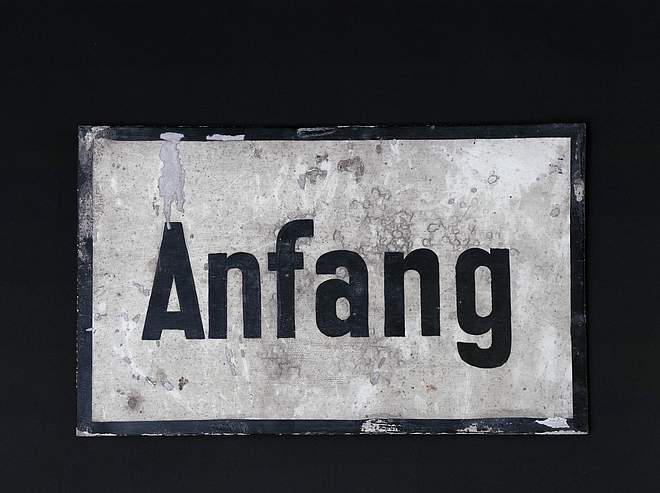
Friedland Station sign
MF1320
Friedland Station sign
For hundreds of thousands of people, Friedland Station was the point of departure to their first home in West Germany. Today, the former station building houses the Museum Friedland’s permanent exhibition. This sign is one of several, now in the collection, discovered during the process of converting the building. Foto: Rainer Jordan
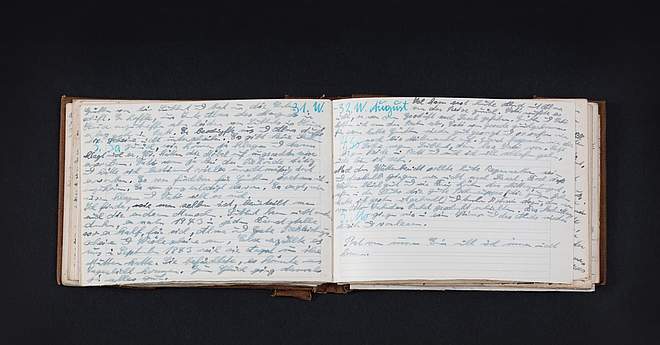
Emma Eckel’s diary
MF1587
Emma Eckel’s diary
During the Second World War bombing raids, Emma Eckel is evacuated from Hamburg to Plauen. In 1946, when she travels back after the war, she passes through the Friedland transit camp. In this home-made diary, she notes down the details of her stops on the way and her impressions. The collection also contains personal reports by many other people on their experiences. Foto: Rainer Jordan
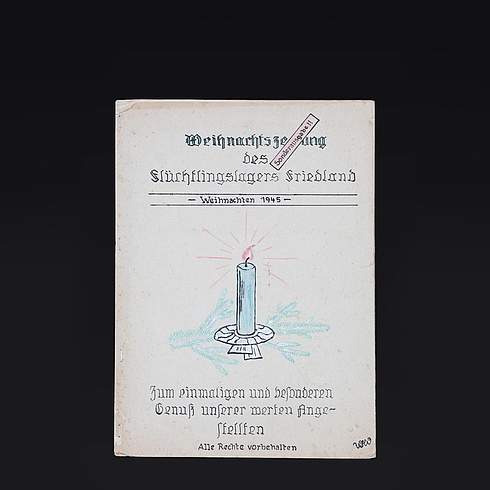
Christmas Magazine
MF1022
Christmas Magazine
In 1945, for the first Christmas in the Friedland camp, an anonymous author prepares this eleven-page magazine to entertain the many employees at the camp. It contains a collection of humorous texts written in verse on the working conditions in Friedland and the mood of the staff. Foto: Rainer Jordan
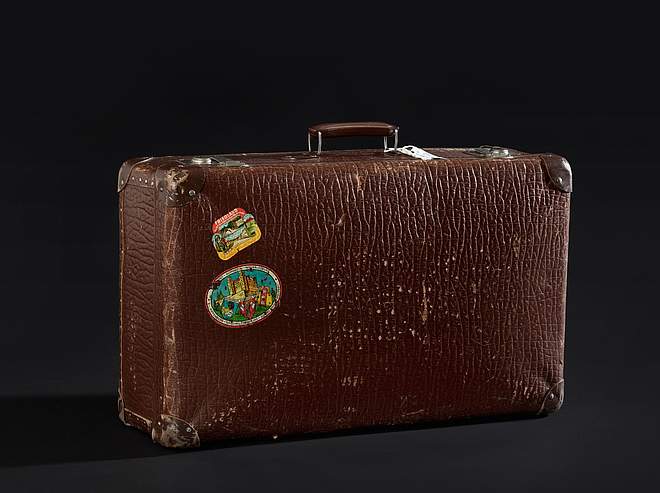
Siegfried Jenkner’s Suitcase
MF1015
Siegfried Jenkner’s Suitcase
In 1950, Siegfried Jenkner is arrested as a member of a circle of critical students in Leipzig. In 1951, a Soviet tribunal sentences him to 25 years in a prison camp. In October 1955, in the course of the release of the last German POWS, the Soviet Union also hands him over to West Germany. His is given this suitcase in the Friedland camp. At a stand in front of the camp, he buys a sticker with a picture of Friedland as a memento of his release. Foto: Rainer Jordan
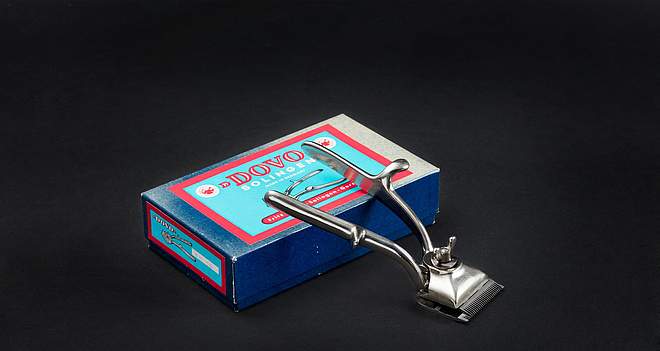
Hair trimmer
MF1308
Hair trimmer
After the Hungarian uprising in November 1956, school student János Mikulás left the country for the West together with his brother and three friends. He reached Friedland by train via Austria. In the camp, he is given a razor, a dictionary and this hair trimmer. Foto: Rainer Jordan
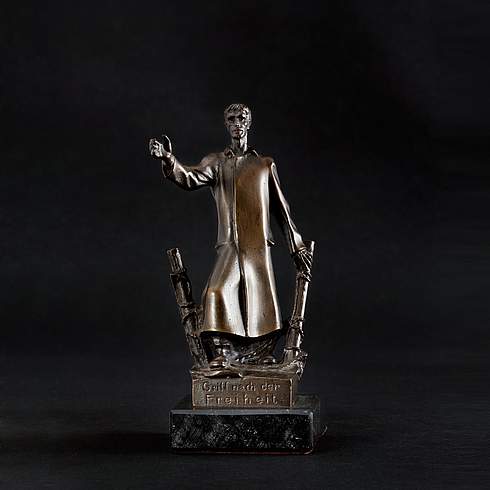
Statuette “Reaching for Freedom”
MF1272
Statuette “Reaching for Freedom”
This little statuette, around 16 cm high, is a miniature copy of Fritz Theilmann’s six-meter-high sculpture entitled Griff in die Freiheit (Reaching into Freedom). In 1955, the original is set up in Friedland by the Association of Returnees (VdH). Just like the “Friedland bell”, this too becomes a key symbol for the return of the POWs. The VdH sells large numbers of a miniature edition of the sculpture under the title Griff nach der Freiheit (Reaching for Freedom). Foto: Rainer Jordan
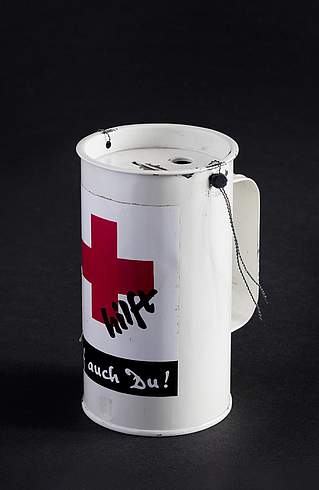
Donation can
MF1401
Donation can
Since Friedland was founded, various charitable and welfare organisations have been working in the camp. They help to supply the arrivals with food and clothes, offer advice on legal matters, and look after the children and young people. Private donations are one source of finance for their work. The money is collected through major campaigns or directly on site – for instance, with this German Red Cross (DRK) donation can. Foto: Rainer Jordan
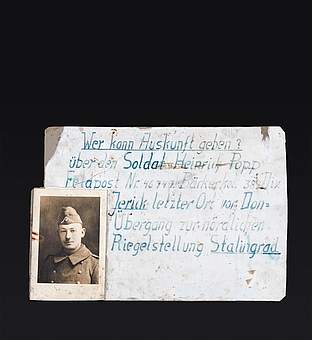
“Have you seen...” placard
L008
“Have you seen...” placard
The Second World War separates millions of people from their relatives. The Friedland transit camp is the focus of the hopes of many of those searching for missing loved ones. There, they ask arrivals for news and put up “have you seen...” notes and placards. In 1955, Heinrich Popp’s son takes this “have you seen...” placard to Friedland hoping to hear of his father, missing since Stalingrad in 1943 – but there is no news. Foto: Rainer Jordan
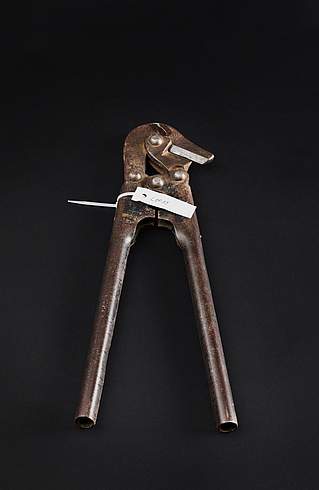
Bolt cutter
L0018
Bolt cutter
The former border between West and East Germany runs only a few kilometres from Friedland. The construction of the inner German border, escapes across it and its opening in 1989 are also chapters in the history of the camp. In 1963, this bolt cutter was used during a mass escape from East Germany from the village of Böseckendorf. Initially, those escaping were accommodated in the Friedland camp – the bolt cutter is now on permanent loan in the museum collection. Foto: Rainer Jordan
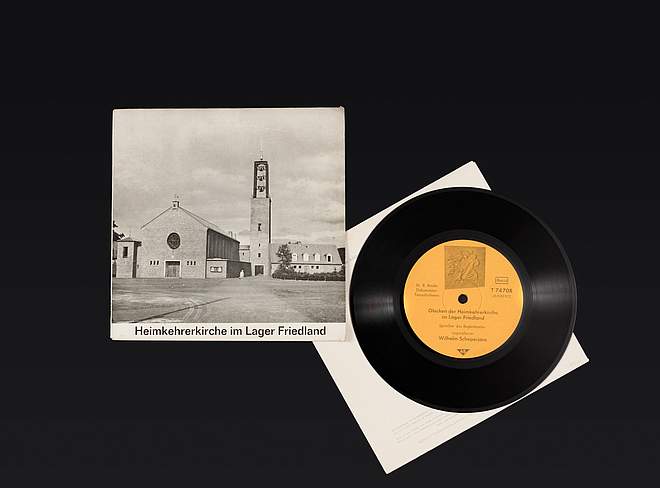
Record with sound of bells
MF1202
Record with sound of bells
The museum collection also includes various audiovisual items which bear witness to the history of the Friedland transit camp. This record, issued in 1964, contains the sounds of the bells ringing at the Church of St. Norbert, consecrated in 1955, as well as accompanying words by the Catholic priest in the camp. Since the Friedland camp was founded, representatives of other denominations have also actively assisted arrivals. Foto: Rainer Jordan
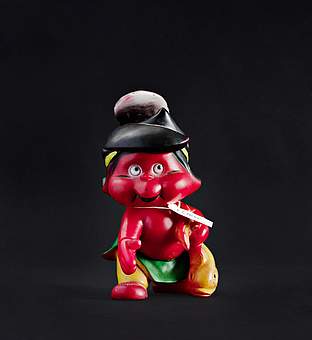
Toy Figure
L0050
Toy Figure
In 1967, Rudolf Karliczek is five years old when he comes to West Germany from Poland with his mother. Like many other ethnic German immigrants, they also pass through the Friedland camp. When donations are handed out in the camp, Rudolf Karliczek is given this “Klein Biberherz” figure from the German comic series Fix und Foxi. Over the following years, the figure becomes his constant companion. Foto: Rainer Jordan
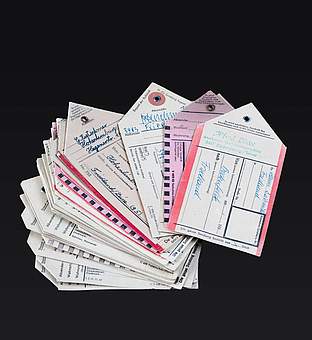
Package tags
MF1228
Package tags
Not only do millions of people pass through the Friedland camp, but innumerable pieces of luggage are also brought over the nearby border and sent on from the village station. To ensure the crates, suitcases and packages all arrive safely at their owners’ new homes, they are given these kinds of labels. Foto: Rainer Jordan
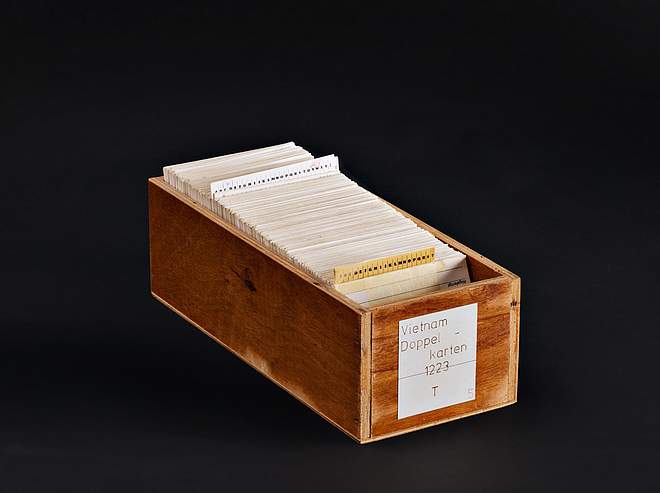
Card index box
MF1325
Card index box
A transit camp is always an administrative location as well. All arrivals are registered and their details systematically filed. From 1978 to the late 1980s, the Vietnamese refugees arriving in Lower Saxony all had to pass through the Friedland camp. This card index box is one of a total of nine containing their details. Foto: Rainer Jordan
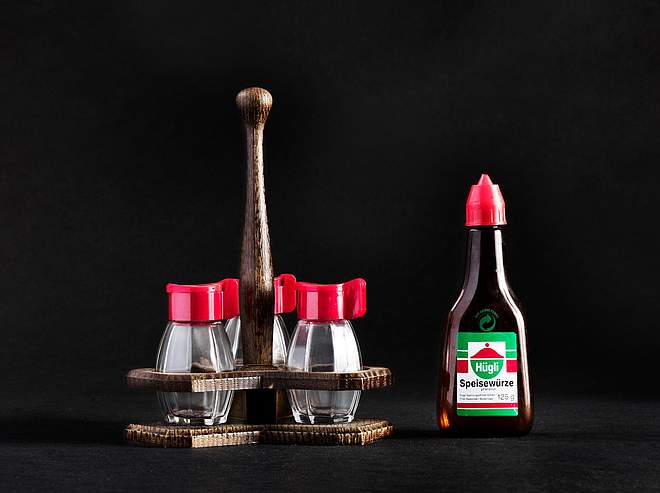
Cruet set
MF1379 & MF1381
Cruet set
The museum also collects everyday things such as this cruet set to illustrate daily life in the camp. Catering for such large numbers in Friedland poses a daily challenge to the kitchen staff and, at times, to those provided with meals. Foto: Rainer Jordan
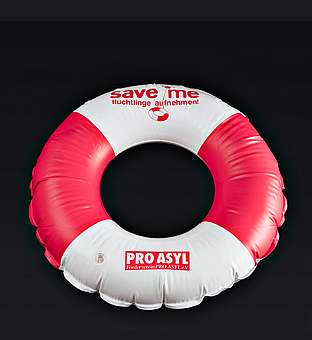
Ring buoy
MF1406
Ring buoy
Since 2008, numerous initiatives and volunteers have been supporting the national Save Me campaign for German participation in the UNHCR resettlement programme. In 2012, the Federal Republic of Germany begins to take in resettlement refugees – the first are accommodated in the Friedland camp. Foto: Rainer Jordan
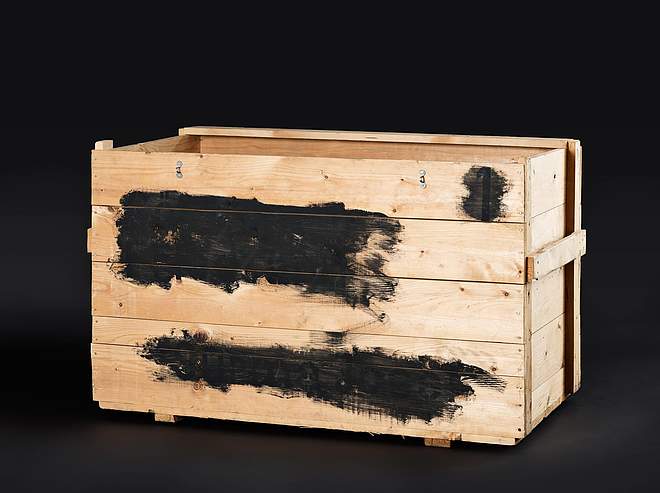
Transport crate belonging to the Surma family
MF1249
Transport crate belonging to the Surma family
In 1983, the Surma family leave Poland for West Germany. They send some of their household goods to Friedland in advance in custom-built wooden crates. After arriving in West Germany, they paint over the address “Göttingen Friedland” to avoid being identified as ethnic German immigrants when they move to their new home. Foto: Rainer Jordan
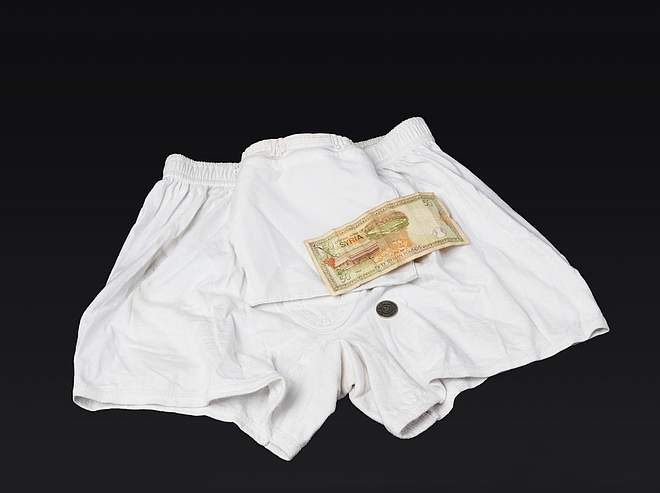
Underpants with zip pocket
L0049
Underpants with zip pocket
In 2013, a man from Syria has a tailor from Damascus sew a zip pocket into this pair of underpants. During his flight to Germany from Syria through Egypt and across the Mediterranean Sea, he always had this pair of underpants with him. He could keep some cash in the zipped pocket. Foto: Rainer Jordan
